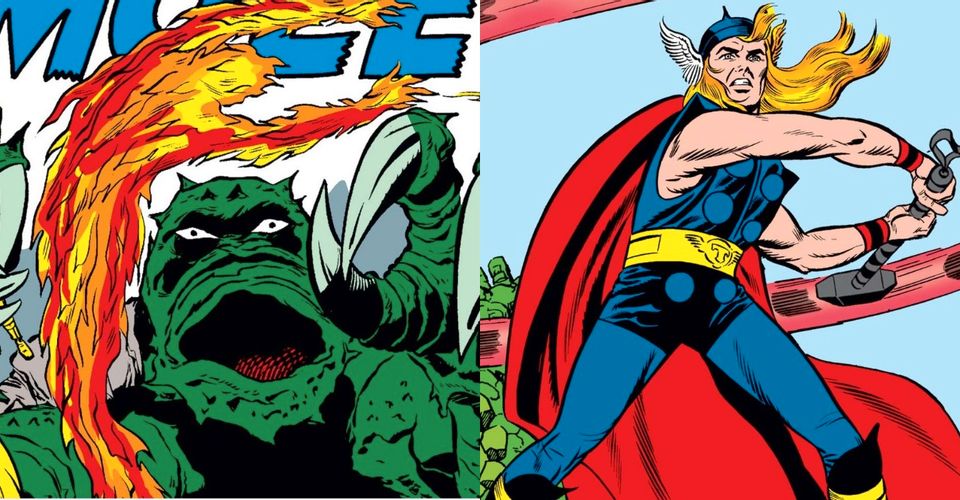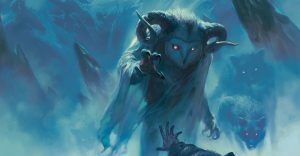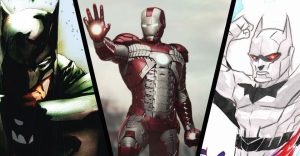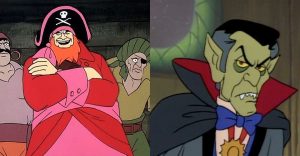Marvel’s First 10 Superhero Comic Book Series, In Chronological Order

When Marvel Comics began as a publishing company, it took over a few books and characters previously published by Timely Publications and Atlas Comics and created comics unlike anything on the market. Taking some inspiration from DC Comics superhero comics, Marvel created a different kind of hero – flawed men and women who lived in a world that looked a lot like the ones readers lived in.
Marvel then took books like Tales to Astonish, Amazing Fantasy, Journey Into Mystery, and Tales of Suspense and introduced an entire world of heroes through those pages. Marvel created its first original comic with a family of superheroes that dealt with familial issues almost as much as it did super-heroics. Marvel followed it up with scientists, monsters, and high school heroes, and never looked back.
Fantastic Four (November 1961)

The first new comic book that Marvel Comics published after setting up shop was Fantastic Four by Stan Lee and Jack Kirby. The first issue of this comic had a scientist wanting to test out an experimental rocket ship and taking his best friend, girlfriend, and her younger brother with him on the unauthorized flight.
It ended with them flying through cosmic rays, giving them all superpowers. Known for years as the First Family of Marvel Comics, the books dealt with their differences as a family, their growth as people, and their journey as explorers. The Fantastic Four remain popular 60 years later and will finally join the Marvel Cinematic Universe in the next few years.
Tales To Astonish (January 1962) – Issue #27

Tales to Astonish started out as a science fiction anthology comic book series, similar to the classic TV show The Twilight Zone. Each issue would have various sci-fi stories that often saw scientists exploring the unknown, often with disastrous results.
In January 1962, what looked like a basic tale for the book turned into the introduction of a brand new superhero. In this book, Hank Pym was testing a new shrinking serum that sent him into a world of danger as ants tried to kill him. Eight issues later, Pym was back as Ant-Man and that made this the debut of the first Avengers founding member to appear in Marvel Comics’ Silver Age.
The Incredible Hulk (May 1962)

The next hero introduced came in his own comic book in May 1962. This was The Incredible Hulk and introduced the world to Bruce Banner, a scientist who was testing gamma-ray tech for the government and led a bomb test in the Arizona desert. When Banner raced out to save a teenager who trespassed onto the site, he was bombarded with gamma rays.
The origin was similar to the Fantastic Four, with a scientist gaining his powers via radiation, but in this case, he became the first Marvel horror-themed antihero. Based on classic horror tales like Jekyll and Hyde, Hulk was unlike anything in comics and remains an important part of Marvel Comics to this day.
Amazing Fantasy (August 1962) – Issue #15

Amazing Fantasy started out as another science fiction anthology series called Amazing Adventures, debuting in 1961. After changing the name with issue #7, the most famous issue in the history of the comic hit in August 1962 when a teenager was bit by a radioactive spider and became Spider-Man.
This ended up as the final issue of the series. However, Spider-Man was so popular that the character demanded his own series. As a teenager, he was the age of many readers of that era. Unlike other teen heroes, he was no sidekick and ended up as one of the most popular superheroes Marvel Comics ever created.
Journey Into Mystery (August 1962) – Issue #83

Journey Into Mystery was a book that started out as a horror comic anthology series and then changed into science fiction and fantasy stories over time. That made it a perfect book to introduce the idea of mythological gods and in issue #83, Marvel introduced Thor to the world.
Thor was a character from classic Norse myths and Marvel created a unique world based around those mythological heroes. In this first issue, Marvel introduced Thor and his original host Donald Blake and then slowly used the series to introduce others from Asgard before Thor eventually got his own series.
Tales Of Suspense (March 1963) – Issue #39

Tales of Suspense was yet another science fiction anthology series that Marvel published that soon became the home to several superheroes. This all started in issue #39 when a new superhero debuted called Iron Man.
This was Tony Stark’s origin story, where he built armor to escape imprisonment and became a non-powered Marvel hero, with his only powers being his armor and tech. This comic series was Iron Man’s home until he got his own book, and then it became the home of Captain America, before changing the title’s name to Captain America with issue #100.
Strange Tales (July 1963) – Issue #110

Strange Tales was a Marvel anthology series that started out as a horror comic from Atlas Comics, similar to the classic EC comics of the era. This made it a perfect spot to introduce magic to the Marvel Universe and in issue #110, Doctor Strange made his debut.
The book actually became a superhero series when Human Torch of the Fantastic Four had adventures there and in one of those issues, a backup story introduced Strange to the world. In Issue #135, Human Torch left and Nick Fury replaced him with Strange sticking around in the second story until the series ended in 1968.
X-Men (September 1963)

In September 1963, Marvel introduced two more teams to the Marvel Universe. The first of these was the introduction of mutants with The Uncanny X-Men. These were all brand-new heroes, with Professor Charles Xavier forming the X-Men from young mutants who needed guidance and assistance in learning how to use their powers.
The X-Men fell out of favor after a few years and Marvel reprinted the issues in the ’70s with no new stories coming. However, when the X-Men returned in the late 1970s with a new lineup, they ended up as the bestselling Marvel Comics of the 1980s and remain popular to this day.
Avengers (September 1963)

The second superhero team comic to debut in September 1963 was The Avengers. Unlike the X-Men, the Avengers were all heroes previously introduced in other comic books. Iron Man, Thor, Ant-Man, and Hulk all teamed up, joined by Wasp, who was previously introduced in Tales to Astonish.
This was similar to DC Comics’ Justice League, as the strongest heroes in the world joined forces to battle an overpowered villain, initially thought to be Hulk but revealed to be Loki. This is the comic that the MCU has anchored itself to, making these some of Marvel’s most iconic heroes.
Daredevil (February 1964)

In February 1964, Marvel Comics introduced Daredevil. This was introduced in his own comic books, as Matt Murdock was a hero who lost his sight as a child and developed enhanced senses to make up for that, becoming a superhero determined to protect Hell’s Kitchen.
Matt Murdock also became a hero in his own right, as he was an attorney who believed that the criminal justice system was as important, if not more so, than fighting villains, and he worked hard to protect the innocent as well as bring in the guilty, a new twist on the idea of a Marvel superhero.
About The Author

















